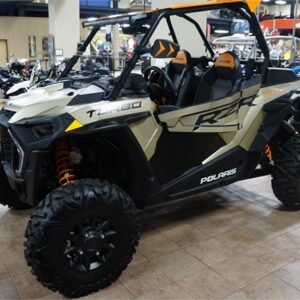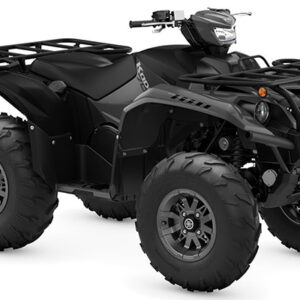Experts disagree on when and where the first ATV was created. We do know that motorcycles existed for nearly 100 years before the first ATVs were designed and developed, and that ATVs came about as a way to take advantage of some of a motorcycle’s versatility but with more utility. Motorcycle manufacturers also wanted to sell more vehicles, particularly in areas where motorcycles aren’t ridden year-round.
Some sources point to Honda as the manufacturer of the first ATV, thanks to the development of a three-wheeled ATV precursor in 1967. However, a prototype of an ATV called the Jiger was created in Canada by John Gower in 1960 or 1961, depending on who you ask. The Jiger was actually an AATV, or amphibious all-terrain vehicle, meaning it could traverse water as well as ground on its six wheels. The company, Versatrek, achieved mass production of the Jiger by 1965, but went out of business in 1968; according to some sources, the company actually failed because it couldn’t keep up with demand.
In the early 1970s, Honda experimented with three-wheeled ATV designs, which were largely abandoned by the late 1980s in favor of more stable four-wheeled designs. The FourTrax line, which Honda introduced during this time, is still on the market today. Suzuki joined the fray in 1982 and quickly became one of the most popular ATV manufacturers, along with Yamaha. Polaris, which introduced its first model in 1985, became the first North American company to enter the segment since the Jiger was discontinued. In the late 1990s, a number of manufacturers, including Bombardier and Arctic Cat, began offering models with much higher horsepower and torque figures, making the segment as much about performance as utility.
Should I Buy an ATV?
Adding an ATV to your garage is an exciting prospect, but first, you should ensure that it’s the right type of power sports vehicle for you. Whether you’re comparing a potential ATV purchase to another type of vehicle, like a UTV, or whether you’re considering an ATV on its own merits, you should keep the following factors in mind. ![]() American Honda Motor Co., Inc.
American Honda Motor Co., Inc.
An ATV is a good choice if you anticipate that you’ll primarily be riding by yourself, or with one passenger. An ATV seats the passenger behind the operator, so if you’d prefer to sit alongside each other, an ATV might not be the best choice for you, and you should consider a UTV instead.
Cost is another factor in choosing an ATV. ATVs are typically less expensive than UTVs, though that varies, of course, based on factors such as brand, model, and specifications. UTVs also tend to cost more because they have safety features such as roll cages and seat belts. So in that sense, if safety is a priority, an ATV might not be right for you. Furthermore, if you want to modify your recreational vehicle with features such as specialized lighting or higher-performance suspension, an ATV might not be right for you, since UTVs tend to have better options in this area.
If you want a nimble and quick vehicle that’s fun to ride, available at relatively low price points, and doesn’t need to do much heavy-duty towing or hauling, an ATV may be the right choice.
ATV Pros and Cons
- Plenty of brands and models to choose from
- Youth and adult models are readily available
- Prices tend to be more affordable than similar kinds of power sport vehicles, such as UTVs
- Good for solo users
- Good for recreation or light duty utility (hauling or towing)
- Lots of fun to ride
- Fewer features than UTVs
- Less safe than UTVs, with fewer safety measures built in
- Few options for customization or modification
- Cannot ride with a passenger side-by-side
- Not ideal for heavy-duty work
Key ATV Specs
Though there may be some outliers on both ends of the range, ATVs currently on the market generally feature single- or two-cylinder engines, with displacement measured in cubic centimeters, or ccs. As you’ll see in the ATV models highlighted in this guide, most adult models are at least 500 cc, but typically less than 1000 cc, unless the model is marketed specifically for high performance or specifically for entry-level or beginner riders. Not all manufacturers provide official horsepower ratings for their ATVs, but when provided, expect to see them in the double-digits, in the 30-50 horsepower range for most models. Transmissions may be manual or automatic; this is definitely a point that potential buyers will want to consider carefully and consider both current and desired skill levels. Regardless of which transmission type you prefer, you’ll have plenty of options from a variety of major brands. Fuel capacity is another factor that varies from model to model, but generally, an ATV’s tank measures between 3-5 gallons.
If you’re interested in using your new ATV for any type of work, pay attention to the payload and towing capacities, since these can vary widely. Some manufacturers, such as Yamaha, even subdivide their ATV model lineup into sport and utility sub-categories. This is done to help potential buyers narrow down the field.
Features vary widely and increase as your budget increases. More expensive models tend to offer benefits such as heavy-duty cargo racks, performance or specialty suspension systems, and halogen or LED lighting.



